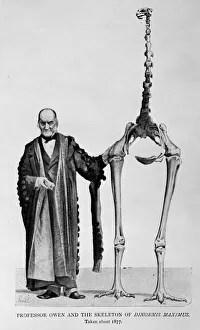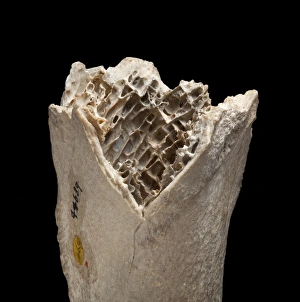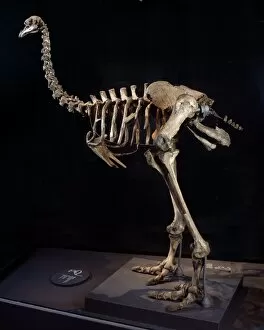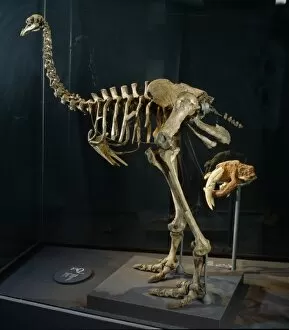Dinornithidae Collection
"Dinornithidae: Unraveling the Mysteries of New Zealand's Extinct Giants" Sir Richard Owen (1804-1892), a renowned British paleontologist
All Professionally Made to Order for Quick Shipping
"Dinornithidae: Unraveling the Mysteries of New Zealand's Extinct Giants" Sir Richard Owen (1804-1892), a renowned British paleontologist, played a crucial role in uncovering the fascinating story of Dinornithidae. These ancient birds, commonly known as moas, once roamed the lush forests of New Zealand. The discovery began with a mere bone fragment—a tantalizing clue that led scientists on an extraordinary journey. Moa bone fragments were found scattered across various locations, hinting at the existence of these colossal creatures. As more pieces were unearthed, their true magnitude became apparent. One species that captured attention was Dinornis elephantopus, also known as the heavy-footed moa. With its towering height and robust build, this bird must have been an awe-inspiring sight to behold. The skeletons revealed long legs and powerful feet adapted for traversing dense vegetation. As researchers delved deeper into their findings, they uncovered additional specimens belonging to different members of the Dinoris sp. , shedding light on the incredible diversity within this avian family. Each unique skeleton provided valuable insights into their physical characteristics and way of life. Amongst them all stood out Dinornis elephantopus—the heavyweight champion among moas—whose bones showcased exceptional strength and size compared to other species, and is believed that these giants could reach heights exceeding ten feet. However, not all moas were colossal in stature; some belonged to smaller species like Little Bush Moa or Pachyornis elephantopus—an intriguing contrast within this extinct lineage. Through meticulous study and analysis conducted by Sir Richard Owen and his contemporaries, we now have a clearer understanding of Dinornithidae's place in history. Their extinction remains shrouded in mystery but is thought to be linked to human arrival on New Zealand shores around 700 years ago.










